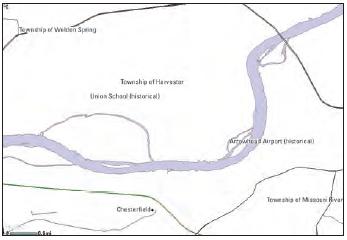Filters: Tags: landform (X) > Types: Citation (X)
4 results (44ms)|
Filters
Date Range
Extensions Types Contacts
Categories Tag Types Tag Schemes |

USGS developed The National Map (TNM) Gazetteer as the Federal and national standard (ANSI INCITS 446-2008) for geographic nomenclature based on the Geographic Names Information System (GNIS). The National Map Gazetteer contains information about physical and cultural geographic features, geographic areas, and locational entities that are generally recognizable and locatable by name (have achieved some landmark status) and are of interest to any level of government or to the public for any purpose that would lead to the representation of the feature in printed or electronic maps and/or geographic information systems. The dataset includes features of all types in the United States, its associated areas, and Antarctica,...

U.S. Geological Survey, Department of the Interior - The annual Geographic Names acquisition plan is to collect geographic name data over the United States and its territories through the Board on Geographic Names processes. The U.S. Board on Geographic Names is a Federal body created in 1890 and established in its present form by Public Law in 1947 to maintain uniform geographic name usage throughout the Federal Government. The Board comprises representatives of Federal agencies concerned with geographic information, population, ecology, and management of public lands. Sharing its responsibilities with the Secretary of the Interior, the Board promulgates official geographic feature names with locative attributes...
Types: Citation;
Tags: BGN,
Board on Geographic Names,
Cultural Resources Theme,
GNIS,
Geographic Names,
Four-level Braun-Blanquet vegetation type hierarchies of an arctic (a section of the Arctic Coastal Plain at Atkasook, Alaska) and an alpine (Indian Peaks area, Colorado Southern Rocky Mountains) area were compared through their vascular plant taxa composition. Vegetation types at all hierarchy levels were more numerous, less well defined, and less clearly distributed along the controlling environmental gradients in the Arctic than in the alpine. This greater environmental and vegetational heterogeneity and relatively poor definition of vegetation types are probably controlled by the surface disturbances of the thaw-lake cycle, rivers, cryoturbation, and wind, which cause significant horizontal movement of materials...
Categories: Publication;
Types: Citation,
Journal Citation;
Tags: Arctic Alaska,
Colorado alpine,
Diagnostic taxa groups,
Disturbance,
Heterogeneity,
Since the beginning of the Cenozoic period several hundreds of metres of the sedimentary cover have been removed from the Colorado Plateau. Palaeoclimatic considerations show that the Colorado Plateau has been dominated by dry climates throughout the Cenozoic with the possible exception of the early Palaeocene. Today in the still prevailing arid climate, which strongly accentuates differences in rock resistance, the relief shows a structurally controlled cuesta scarp topography in the slightly deformed strata of alternating resistance. In examining whether the denudational efficiency of scarp retreat was sufficient to account for the wide erosional gaps in the sedimentary cover, rates of scarp retreat were determined...
Categories: Publication;
Types: Citation,
Journal Citation;
Tags: Cenozoic,
Colorado Plateau,
Cuesta scarps,
Earth Surface Processes and Landforms,
Rates of scarp retreat,
|

|